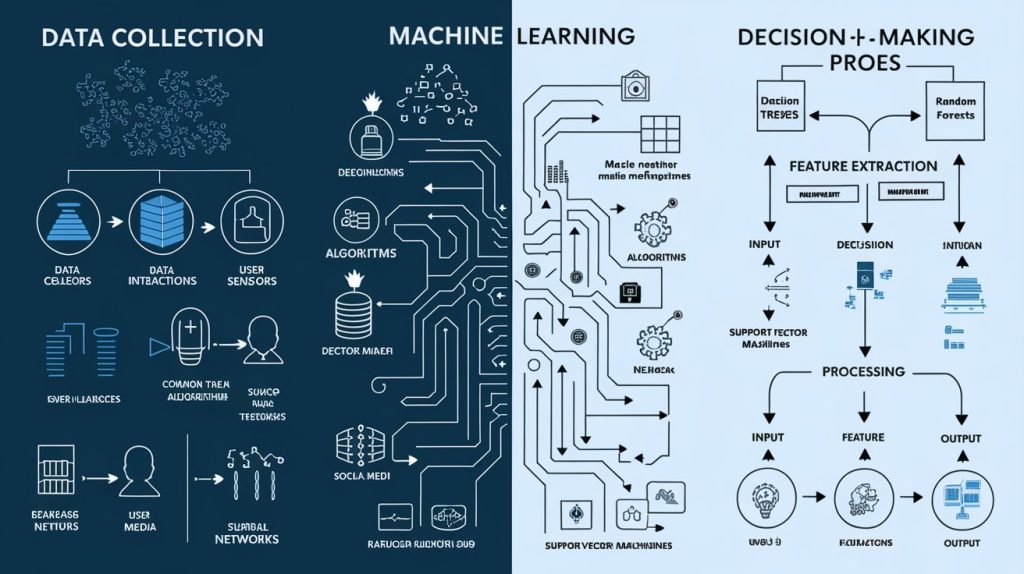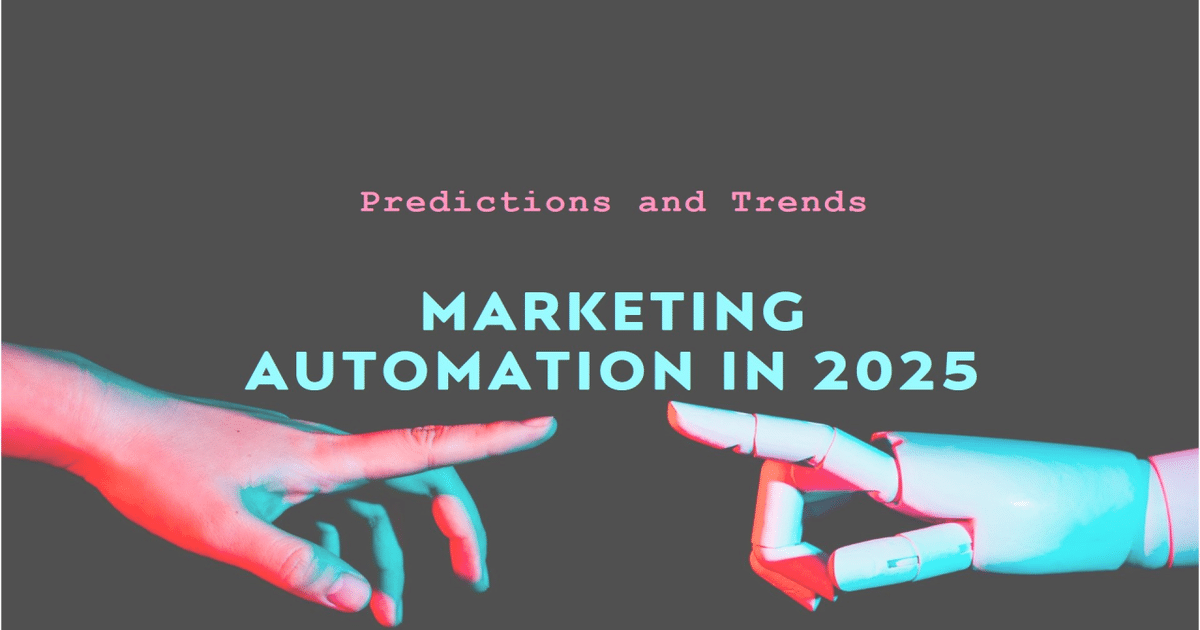Artificial intelligence (AI) has become an integral part of our daily lives, revolutionizing industries and reshaping the way we interact with technology. But have you ever wondered how AI actually works behind the scenes? In this comprehensive guide, we’ll demystify the inner workings of AI, providing you with a clear understanding of its mechanisms and potential.
By delving into the intricacies of AI, you’ll gain valuable insights that can help you leverage this powerful technology in your business or personal projects. Whether you’re a website owner, content creator, or entrepreneur, understanding AI’s functionality can give you a competitive edge in today’s rapidly evolving digital landscape.
Defining Artificial Intelligence: Basic Concepts and Components
What is Artificial Intelligence?
Artificial Intelligence refers to the simulation of human intelligence in machines programmed to think and learn like humans. It encompasses a wide range of technologies and approaches aimed at creating systems that can perform tasks that typically require human intelligence.
At its core, AI is about developing algorithms and models that can process information, recognize patterns, and make decisions or predictions based on the data they receive. This capability allows AI systems to adapt and improve their performance over time, much like humans do through experience.
Key Components of AI Systems
AI systems are comprised of several essential components that work together to create intelligent behavior:
- Data: The foundation of any AI system is data. Large datasets are used to train AI models and provide the information necessary for decision-making.
- Algorithms: These are the step-by-step instructions that guide the AI system in processing data and making decisions.
- Processing Power: AI requires significant computational resources to handle complex calculations and data processing tasks.
- Learning Capabilities: The ability to learn from experience and improve performance over time is a crucial aspect of AI systems.
- Reasoning Mechanisms: AI systems use various reasoning techniques to draw conclusions and make decisions based on available information.
Understanding these components is crucial for anyone looking to implement AI solutions or leverage AI tools in their work. At AItoolsbiz, we offer a range of AI-powered tools that incorporate these elements to help businesses and individuals enhance their productivity and decision-making processes.
The Basic Mechanism of Artificial Intelligence
Data Collection and Processing
The journey of AI begins with data. AI systems collect vast amounts of information from various sources, including:
- Sensors and IoT devices
- User interactions
- Databases and archives
- Online sources and social media
This data is then cleaned, structured, and prepared for analysis. The quality and relevance of the data are crucial factors in determining the effectiveness of the AI system.
Machine Learning and Algorithms
At the heart of AI lies machine learning (ML), a subset of AI that focuses on creating algorithms capable of learning from and making predictions or decisions based on data. These algorithms improve their performance over time without being explicitly programmed for each task.
Common types of machine learning algorithms include:
- Decision trees
- Neural networks
- Support vector machines
- Random forests
Each algorithm has its strengths and is suited for different types of problems and datasets.
Decision-Making Process
Once an AI system has been trained on a dataset, it can make decisions or predictions when presented with new, unseen data. This process typically involves:
- Input: Receiving new data
- Feature extraction: Identifying relevant characteristics in the data
- Processing: Applying the trained model to the new data
- Output: Generating a decision, prediction, or action
The accuracy and reliability of these decisions depend on the quality of the training data, the appropriateness of the chosen algorithm, and the complexity of the problem at hand.

How Does Artificial Intelligence Work
Types of Artificial Intelligence and Their Functioning
Narrow AI (Weak AI)
Narrow AI, also known as Weak AI, is designed to perform specific tasks within a limited domain. This is the type of AI we interact with most frequently in our daily lives. Examples include:
- Virtual assistants like Siri or Alexa
- Recommendation systems on streaming platforms
- Spam filters in email applications
Narrow AI excels at its designated tasks but lacks the ability to transfer its knowledge to other domains or perform tasks outside its specific programming.
General AI (Strong AI)
General AI, or Strong AI, refers to AI systems that possess human-like intelligence and can perform any intellectual task that a human can. This level of AI would have the ability to:
- Reason abstractly
- Learn from experience
- Solve complex problems across various domains
- Understand and generate natural language
While General AI remains largely theoretical at present, research in this area continues to push the boundaries of what’s possible in artificial intelligence.
Superintelligent AI
Superintelligent AI represents a hypothetical future AI that surpasses human intelligence across all domains. Such an AI would be capable of:
- Outperforming humans in cognitive tasks
- Making scientific breakthroughs
- Solving global challenges
The development of superintelligent AI raises significant ethical and existential questions that are actively debated in the scientific and philosophical communities.
Machine Learning: The Core of Modern Artificial Intelligence
Supervised Learning
Supervised learning is a type of machine learning where the algorithm is trained on a labeled dataset. This means that the input data is paired with the correct output, allowing the algorithm to learn the relationship between inputs and outputs.
Examples of supervised learning tasks include:
- Image classification
- Spam detection
- Weather prediction
In supervised learning, the algorithm learns to make predictions by minimizing the error between its predictions and the actual labels in the training data.
Unsupervised Learning
Unsupervised learning algorithms work with unlabeled data, attempting to find patterns or structures within the data without prior knowledge of the correct outputs. This type of learning is particularly useful for:
- Clustering similar data points
- Anomaly detection
- Dimensionality reduction
Unsupervised learning can reveal hidden patterns in data that might not be apparent to human analysts, making it valuable for exploratory data analysis and feature discovery.
Reinforcement Learning
Reinforcement learning is a type of machine learning where an agent learns to make decisions by interacting with an environment. The agent receives rewards or penalties based on its actions, allowing it to learn optimal behavior over time.
Applications of reinforcement learning include:
- Game playing AI (e.g., AlphaGo)
- Robotics control
- Autonomous vehicles
This approach is particularly effective in scenarios where the optimal sequence of decisions is not known in advance but can be learned through trial and error.
Deep Learning and Artificial Neural Networks
Structure of Artificial Neural Networks
Artificial Neural Networks (ANNs) are a fundamental component of deep learning, inspired by the structure and function of biological neural networks in the human brain. An ANN typically consists of:
- Input layer: Receives initial data
- Hidden layers: Process and transform the data
- Output layer: Produces the final result or prediction
The connections between these layers, known as weights, are adjusted during the training process to improve the network’s performance.
Training Process of Neural Networks
Training a neural network involves:
- Forward propagation: Data flows through the network from input to output
- Error calculation: The difference between the network’s output and the desired output is computed
- Backpropagation: The error is propagated back through the network to adjust the weights
- Iteration: Steps 1-3 are repeated with new data until the network’s performance is satisfactory
This process allows the network to learn complex patterns and representations from large datasets.
Applications of Deep Learning in AI
Deep learning has revolutionized many areas of AI, including:
- Computer vision: Image recognition, object detection, and facial recognition
- Natural language processing: Machine translation, sentiment analysis, and chatbots
- Speech recognition: Voice assistants and transcription services
At AItoolsbiz, we leverage deep learning technologies to provide cutting-edge AI solutions for businesses and individuals looking to enhance their digital capabilities.
Natural Language Processing (NLP) in AI
How AI Understands and Processes Human Language
Natural Language Processing enables AI systems to understand, interpret, and generate human language. This process involves several steps:
- Tokenization: Breaking down text into individual words or phrases
- Part-of-speech tagging: Identifying the grammatical role of each word
- Named entity recognition: Identifying proper nouns and key phrases
- Sentiment analysis: Determining the emotional tone of the text
- Semantic analysis: Understanding the meaning and context of the language
Common NLP Techniques
Some popular NLP techniques include:
- Word embeddings: Representing words as vectors in a high-dimensional space
- Recurrent Neural Networks (RNNs): Processing sequential data like sentences
- Transformers: Handling long-range dependencies in text (e.g., BERT, GPT)
These techniques have significantly improved the ability of AI systems to work with human language.
Applications of NLP in Chatbots and Virtual Assistants
NLP powers many of the conversational AI tools we use daily, such as:
- Customer service chatbots
- Virtual personal assistants (e.g., Siri, Alexa)
- Language translation services
These applications demonstrate the power of AI to understand and respond to human language in increasingly natural and helpful ways.
Computer Vision and Image Recognition
How AI “Sees” and Understands Images
Computer vision allows AI systems to interpret and analyze visual information from the world. This process typically involves:
- Image preprocessing: Adjusting brightness, contrast, and other properties
- Feature extraction: Identifying key visual elements in the image
- Object detection: Locating and classifying objects within the image
- Image segmentation: Dividing the image into meaningful parts
- Scene understanding: Interpreting the overall context and meaning of the image
Object Recognition Algorithms
Common algorithms used in object recognition include:
- Convolutional Neural Networks (CNNs): Specialized neural networks for processing grid-like data such as images
- YOLO (You Only Look Once): Real-time object detection system
- R-CNN (Region-based Convolutional Neural Networks): Two-stage object detection approach
These algorithms have enabled significant advancements in fields such as autonomous vehicles, surveillance systems, and medical imaging.
Applications in Healthcare and Security
Computer vision is making significant impacts in various industries:
- Healthcare: Analyzing medical images for disease detection and diagnosis
- Security: Facial recognition for access control and surveillance
- Manufacturing: Quality control and defect detection in production lines
At AItoolsbiz, we offer AI-powered image analysis tools that can help businesses leverage these technologies for their specific needs.
AI System Development and Deployment Process
Problem Definition and Data Collection
The first step in developing an AI system is clearly defining the problem to be solved and gathering relevant data. This involves:
- Identifying the specific task or challenge the AI will address
- Determining the type and amount of data needed
- Collecting and preparing the data for analysis
The quality and relevance of the data collected at this stage are crucial for the success of the AI system.
Model Selection and Training
Once the data is prepared, the next steps are:
- Choosing an appropriate AI model or algorithm
- Splitting the data into training and testing sets
- Training the model on the training data
- Validating the model’s performance on the test data
This process often involves experimenting with different models and hyperparameters to find the best solution for the given problem.
Performance Evaluation and Optimization
After initial training, the AI system’s performance must be evaluated and optimized:
- Measuring the system’s accuracy, speed, and efficiency
- Identifying areas for improvement
- Fine-tuning the model or collecting additional data as needed
- Iterating on the process until satisfactory performance is achieved
Continuous monitoring and updating of the AI system are essential to maintain its effectiveness over time.
Popular AI Development Tools and Platforms
TensorFlow and PyTorch
TensorFlow and PyTorch are two of the most widely used open-source frameworks for developing machine learning and deep learning models:
- TensorFlow: Developed by Google, known for its flexibility and scalability
- PyTorch: Created by Facebook, praised for its ease of use and dynamic computation graphs
Both frameworks offer comprehensive libraries and tools for building and deploying AI models across various platforms.
IBM Watson and Google Cloud AI
Cloud-based AI platforms like IBM Watson and Google Cloud AI provide powerful tools and services for businesses looking to integrate AI into their operations:
- IBM Watson: Offers a range of AI services, including natural language processing, computer vision, and speech recognition
- Google Cloud AI: Provides machine learning APIs, AutoML tools, and AI infrastructure solutions
These platforms allow companies to leverage advanced AI capabilities without the need for extensive in-house expertise or infrastructure.
OpenAI GPT and DALL-E
OpenAI has developed groundbreaking AI models that push the boundaries of what’s possible in natural language processing and image generation:
- GPT (Generative Pre-trained Transformer): A powerful language model capable of generating human-like text
- DALL-E: An AI system that can create unique images from text descriptions
These models demonstrate the rapidly advancing capabilities of AI in creative and linguistic tasks.
Challenges in AI Development and Operation
Ensuring Data Quality and Reliability
The effectiveness of AI systems heavily depends on the quality of the data they are trained on. Challenges in this area include:
- Dealing with incomplete or inconsistent data
- Ensuring data relevance and representativeness
- Handling data privacy and security concerns
At AItoolsbiz, we emphasize the importance of robust data management practices in AI development.
Addressing Bias and Fairness in AI
AI systems can inadvertently perpetuate or amplify biases present in their training data or design. Key considerations include:
- Identifying and mitigating algorithmic bias
- Ensuring fair representation in training data
- Implementing ethical guidelines in AI development
Addressing these issues is crucial for creating AI systems that are equitable and beneficial to all users.
Security and Privacy in AI Systems
As AI systems handle increasingly sensitive data and make important decisions, security and privacy concerns become paramount:
- Protecting AI models from adversarial attacks
- Ensuring user data privacy in AI applications
- Complying with data protection regulations (e.g., GDPR)
Implementing robust security measures and privacy-preserving techniques is essential for responsible AI development.
The Future of Artificial Intelligence
AI Development Trends
Some key trends shaping the future of AI include:
- Explainable AI: Making AI decision-making processes more transparent and interpretable
- Edge AI: Deploying AI capabilities on edge devices for faster, more efficient processing
- AI-human collaboration: Developing AI systems that work alongside humans, augmenting rather than replacing human capabilities
These trends are likely to drive significant advancements in AI technology and its applications across various industries.
AI and Ethics
As AI becomes more powerful and pervasive, ethical considerations are increasingly important:
- Developing AI governance frameworks
- Addressing the societal impacts of AI, including job displacement
- Ensuring AI aligns with human values and promotes the greater good
The ethical development and deployment of AI will be crucial in shaping its long-term impact on society.
Impact of AI on Society and Economy
AI is poised to have far-reaching effects on our society and economy:
- Transforming job markets and creating new types of work
- Revolutionizing healthcare, education, and other key sectors
- Addressing global challenges such as climate change and resource management
Understanding and preparing for these impacts will be essential for individuals, businesses, and policymakers alike.
Frequently Asked Questions About AI Operations
Can AI Learn and Improve Itself?
Yes, AI systems can learn and improve their performance over time through techniques like machine learning and reinforcement learning. However, this improvement is typically within the scope of their initial programming and training data. True self-improvement, where an AI system can expand its capabilities beyond its original design, remains a challenge in the field of artificial general intelligence (AGI).
How Can We Ensure AI Operates Safely and Reliably?
Ensuring the safe and reliable operation of AI systems involves several key practices:
- Rigorous testing and validation of AI models
- Implementing fail-safe mechanisms and human oversight
- Regularly updating and maintaining AI systems
- Adhering to ethical guidelines and industry standards
- Promoting transparency in AI decision-making processes
At AItoolsbiz, we prioritize these practices in our AI tool development to provide users with trustworthy and dependable solutions.
Can AI Be Creative Like Humans?
While AI has shown impressive capabilities in generating art, music, and text, the nature of AI creativity differs from human creativity. AI can create novel combinations and variations based on its training data, but it lacks the deeper understanding and emotional context that often drives human creativity. However, AI can be a powerful tool to augment and inspire human creativity in various fields.
How Can We Control the Development of AI?
Controlling AI development requires a multi-faceted approach:
- Establishing international regulations and ethical guidelines
- Promoting responsible AI research and development practices
- Encouraging collaboration between AI researchers, ethicists, and policymakers
- Investing in AI safety research
- Educating the public about AI capabilities and limitations
These measures can help ensure that AI development progresses in a way that benefits society while mitigating potential risks.
Contact AItoolsbiz
Learn More About How AI Works
To deepen your understanding of AI and its applications, we invite you to explore the resources available at AItoolsbiz. Our team of experts regularly publishes articles, guides, and tutorials on various aspects of AI technology.
Visit our website at https://aitoolsbiz.com for in-depth content on AI operations, trends, and best practices.
Discover Advanced AI Tools at AItoolsbiz
At AItoolsbiz, we offer a range of cutting-edge AI tools designed to enhance your productivity and decision-making processes. Whether you’re a business owner, content creator, or tech enthusiast, our AI solutions can help you stay ahead in the rapidly evolving digital landscape.
Explore our AI tool offerings and start leveraging the power of artificial intelligence in your projects today. Visit https://aitoolsbiz.com to learn more and get started.
For personalized assistance and inquiries, don’t hesitate to reach out to us:
- YouTube: https://youtube.com/@AItoolsbiz
- Twitter: https://x.com/AItoolsbiz
- LinkedIn: https://www.linkedin.com/aitoolsbiz/
Join our community of AI enthusiasts and stay updated on the latest developments in artificial intelligence. Together, we can explore the limitless possibilities of AI technology and shape the future of intelligent systems.







